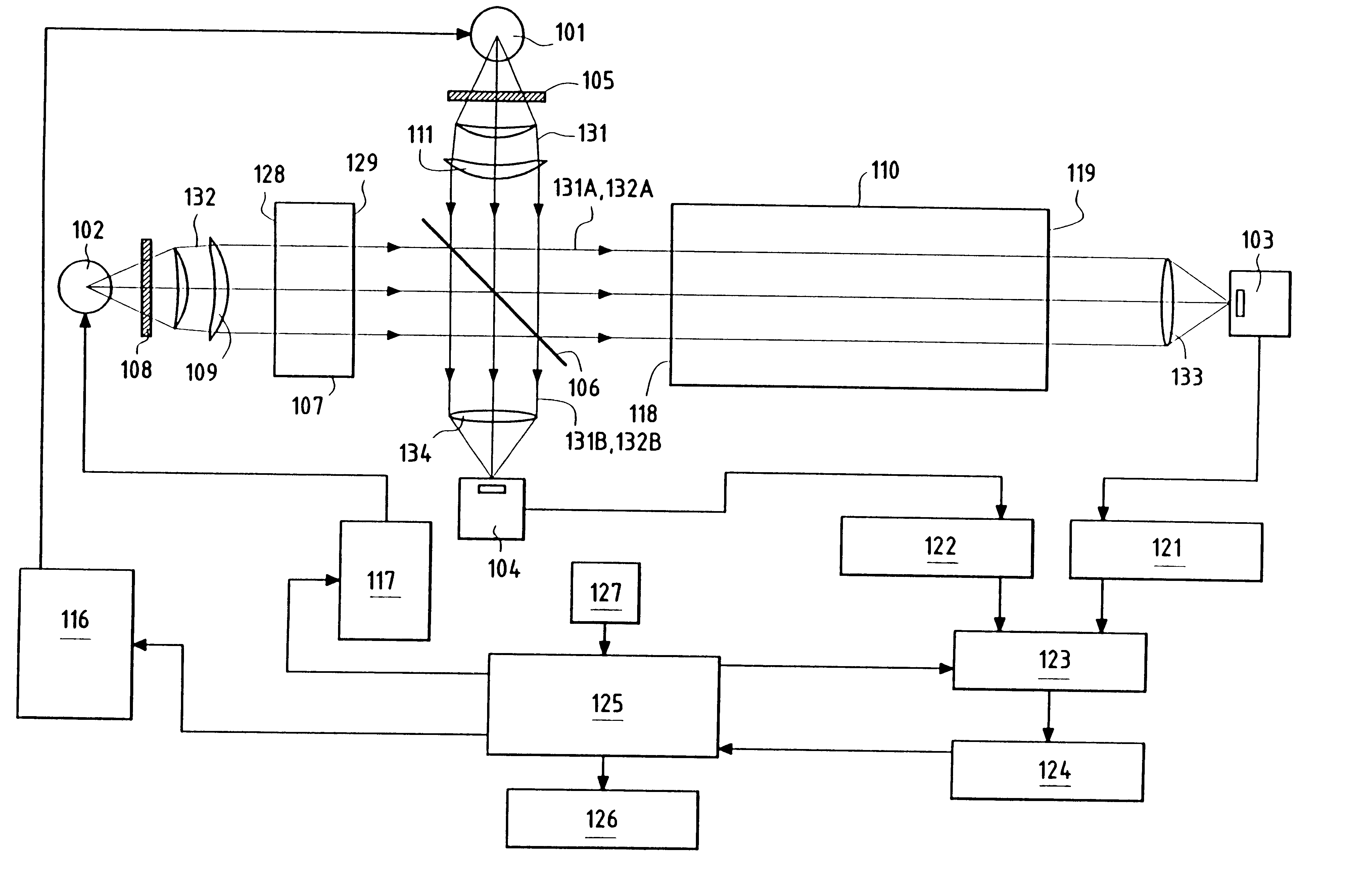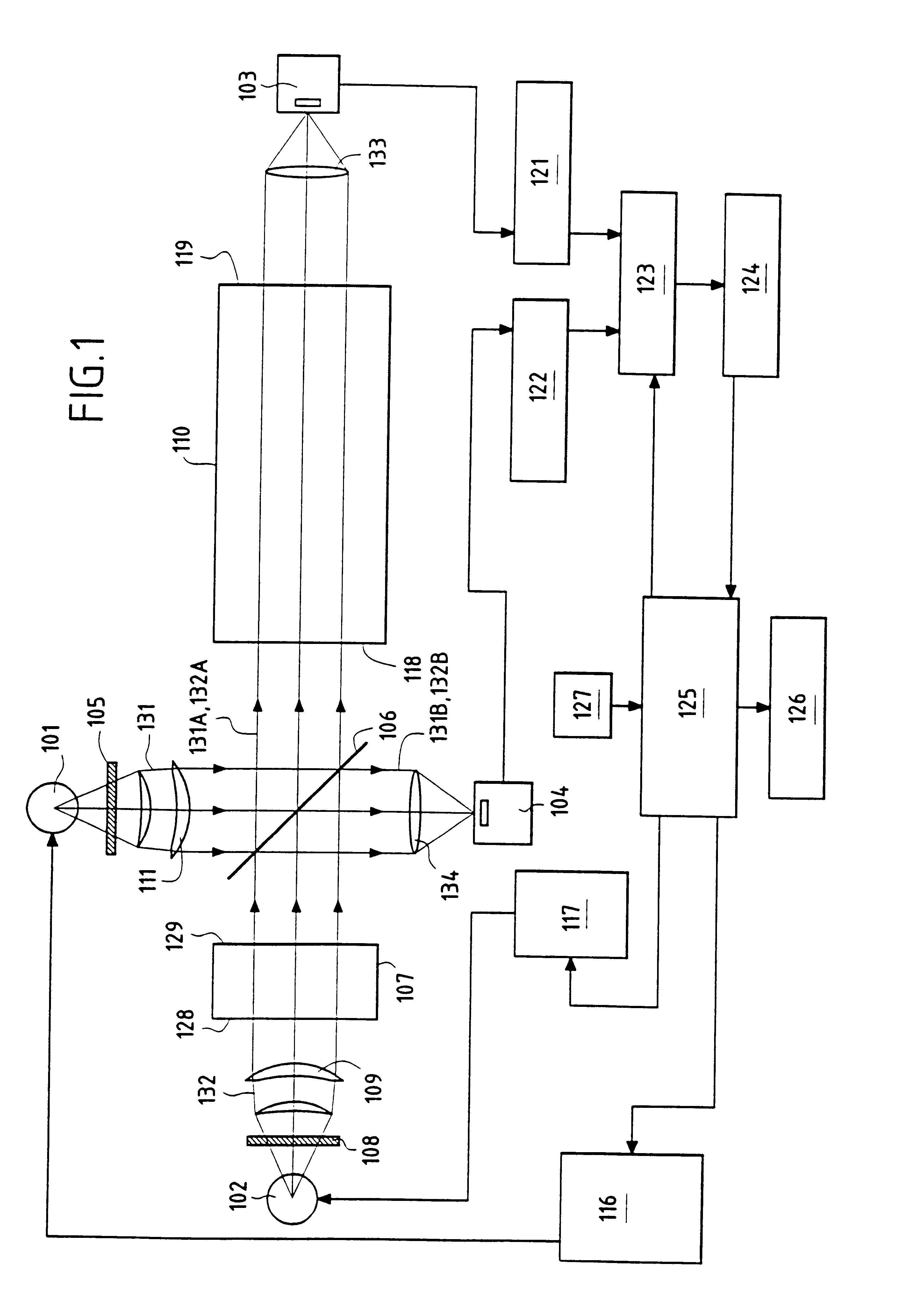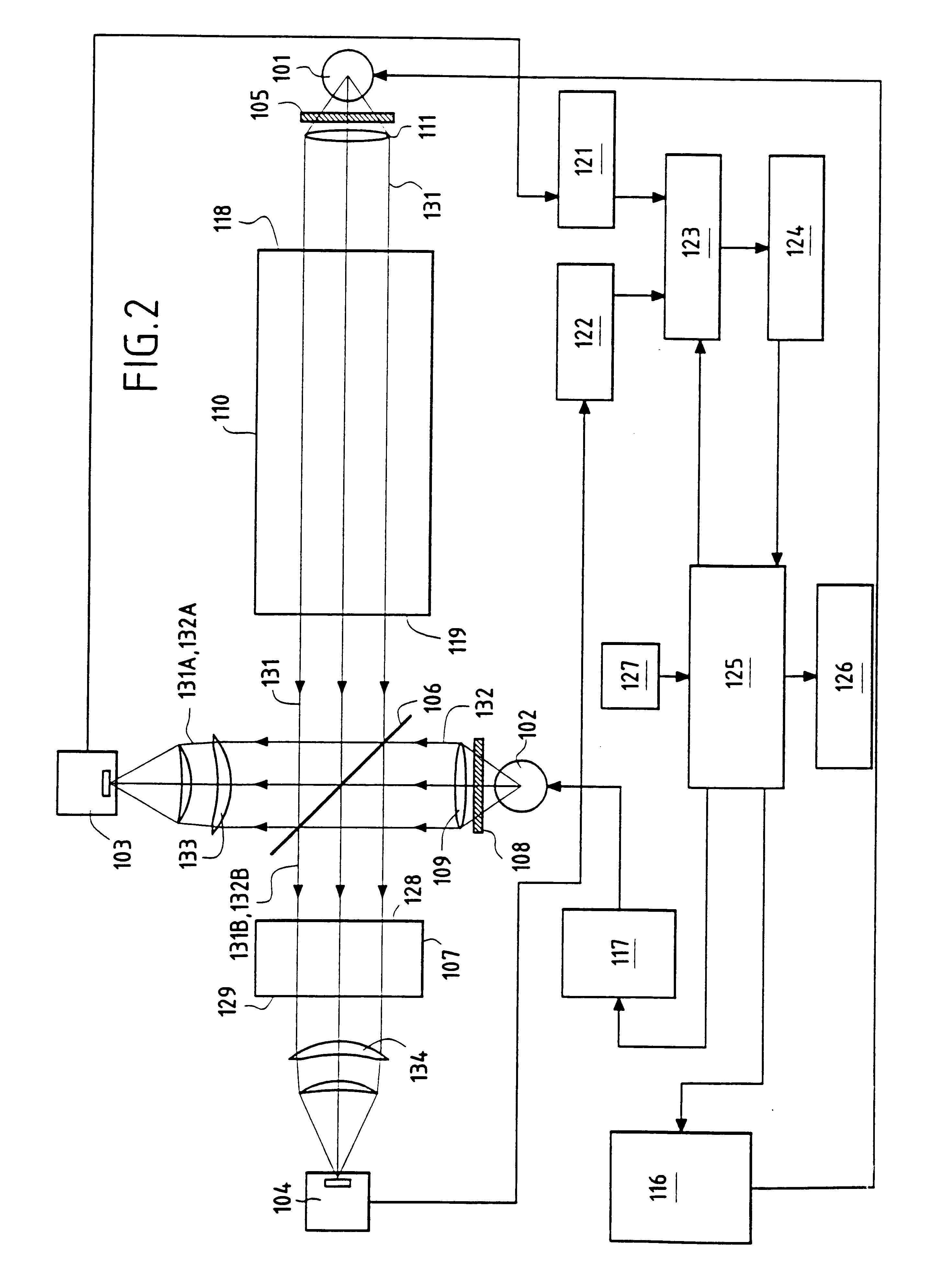Method and apparatus for detecting gases
a gas detection and gas technology, applied in the direction of fluid tightness measurement, optical radiation measurement, instruments, etc., can solve the problems of poor selectivity, no selectivity, and poor medium performance and stability of appliances, and achieve good selectivity, excellent sensitivity, and good robustness against shocks
- Summary
- Abstract
- Description
- Claims
- Application Information
AI Technical Summary
Benefits of technology
Problems solved by technology
Method used
Image
Examples
Embodiment Construction
With reference initially to FIG. 1, there can be seen the optical system of a first embodiment of a gas detector of the invention for detecting and measuring the concentration of a predetermined gas present in a mixture of gases containing a plurality of gases having optical absorption spectra that overlap.
A first radiation source 101, such as a light emitting diode (LED) delivers a measurement beam 131 which passes through a narrow-band bandpass filter 105 covering a spectrum range containing absorption lines of the gas to be measured. The beam 131 then passes through a lens 111 so as to collimate the beam onto a beam splitter 106.
A second radiation source 102, such as an LED, supplies a reference beam 132 which passes through a narrow-band bandpass filter 108 covering a spectrum range containing absorption lines of the gas to be measured. The beam 132 then passes through a lens 109 so as to be collimated onto a filter cell 107 containing the gas to be detected.
The filter cell 107 ...
PUM
| Property | Measurement | Unit |
|---|---|---|
| wavelength band | aaaaa | aaaaa |
| wavelength | aaaaa | aaaaa |
| concentration | aaaaa | aaaaa |
Abstract
Description
Claims
Application Information
 Login to View More
Login to View More - R&D
- Intellectual Property
- Life Sciences
- Materials
- Tech Scout
- Unparalleled Data Quality
- Higher Quality Content
- 60% Fewer Hallucinations
Browse by: Latest US Patents, China's latest patents, Technical Efficacy Thesaurus, Application Domain, Technology Topic, Popular Technical Reports.
© 2025 PatSnap. All rights reserved.Legal|Privacy policy|Modern Slavery Act Transparency Statement|Sitemap|About US| Contact US: help@patsnap.com



